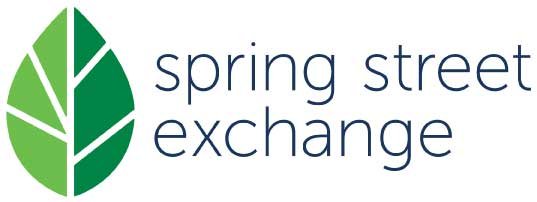Amazon has been almost constantly innovating in different areas for years. Now they have set their sights on healthcare. Read about how our Disruption Junction Palooza session this summer took on scenarios for this giant - and how health plans and hospitals are rating patient comfort levels with Alexa’s new Skills Kit.
Amazon is always innovating, aren’t they? Whether it’s promising one-day delivery for Prime members, launching new-original content on their Prime Video platform, expanding their retail physical blueprint via Amazon 4-Star and Amazon Books stores, or delving into the healthcare industry, you can’t take your eye off them or you’ll definitely miss out. This is partly why Spring Street Exchange chose to focus on Amazon for our most recent Visioning Palooza, which was held in Boston in June.
Those of us in the healthcare industry have been considering which powerful outsider (tech) company may disrupt us for some time. As time has gone by, and guesses have been made, the potential entry of different competitors feels ever-more imminent. Industry insiders say that smart money is placed on Amazon being the first to jump into healthcare in such a way as to have the most impact on the current delivery model and supply chain.
With that in mind, we explored four scenarios during the Amazon-focused June Palooza
1. Large Employer Disruption – the Haven effect.
2. Pharmacy – sweeping changes to the supply chain.
3. Bricks and Mortar – Amazon quickly acquires a mainstream retail presence in which to deliver healthcare services.
4. Virtual Networks – Amazon develops a direct-to-consumer solution through the formation of their own provider network.
We asked attendees to put themselves in the place of Amazon executives and think through what moves they might make. We gave them goals like reducing the cost curve by 5% by 2022, and asked them to back up how they would achieve the goals via changes to benefit design, network, administration changes and consumer engagement. They were also charged with shaking up the pharmacy supply chain, and had to define things like target customer, distribution channel and technical capabilities. We had participants imagine what Amazon might do with a provider network they developed themselves, and how they could launch a Bricks and Mortar delivery system via acquisition.
This kind of exercise never fails to shake the cobwebs from people’s minds and raise them above the clouds of the day-to-day focus. We always come away from these events invigorated and anxious for the next one. Speaking of the next one, keep your eyes on your inbox, we’ll be announcing our 2020 events soon. We hope you can join us at one or all of them!
“Industry insiders say that smart money is placed on Amazon being the first to jump into healthcare in such a way as to have the most impact on the current delivery model and supply chain.”
Did you hear?
Earlier this year, Amazon announced that its Alexa digital assistant would be incorporating HIPAA-compliant skills into its software. This Skills Kit allows medical organizations to build Alexa skills capable of transferring and receiving PHI. As part of the project, Amazon coordinated with six organizations to come up with the six new skills. Software Advice recently conducted a survey of patients from the six healthcare organizations to gauge their comfort level with using Alexa in this way. Below you will find the percentages of respondents at each organization who were at least moderately comfortable with the skill.
Atrium Health - Allows customers in North and South Carolina to schedule same-day appointments at urgent care facilities. Patient Comfort Level: 66%
Boston Children’s Hospital - The “My Children’s Enhanced Recovery After Surgery” program allows caregivers to share and obtain post-op information and manage appointments. Patient Comfort Level: 43%
Cigna - Created a voice program called “Cigna Health Today” that allows employees of large clients to manage their health goals and earn wellness incentives. Patient Comfort Level: 63%
Express Scripts - Allows users can check the status of home delivery prescriptions. Patient Comfort Level: 69%
Livongo - Allows users to connect Alexa to blood sugar monitoring devices and then use a voice command to ask for their latest blood sugar readings and receive “Health Nudges.” Patient Comfort Level: 58%
Providence St. Joseph Health - Created a program called “Swedish Health Connect” that lets patients locate nearby urgent care facilities and schedule same-day appointments. Patient Comfort Level: 69%
From this data, it appears that patients are most comfortable with the less complex activities like checking delivery statuses and scheduling activities. It will be important to watch how these capabilities change and expand over time, and what the happens to Patient Comfort Levels as a result of changes – or perhaps just becoming used to the new capability.
Sources:
Business Insider, Jaime Toplin, https://www.businessinsider.com/amazon-expands-physical-retail-footprint-2019-8, Aug, 19, 2019
Market Realist, Margaret Patrick, https://marketrealist.com/2019/08/amazon-one-day-delivery-what-know/, Aug 19, 2019
Software Advice, Lisa Hedges, https://www.softwareadvice.com/resources/alexa-healthcare-skills/, Aug 9, 2019
HIPAA Journal, no author named, https://www.hipaajournal.com/hipaa-compliant-alexa-skills/, Apr 5, 2019

